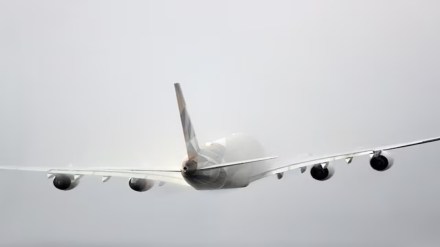The possibilities of domestically assembling a civilian passenger aircraft definitely appear within striking distance with the inauguration of the Tata Advanced Systems Limited-Airbus facility in Vadodara to manufacture C-295 medium-lift tactical transport aircraft for the Indian Air Force. A certain number of aircraft will be purchased in a flyaway condition — the first was delivered last September — and the rest will be assembled domestically. In July, Airbus also inked an agreement with the Tata Group to manufacture the best-selling H125 helicopter from its civilian range in the country at the Farnborough International Airshow. India thus will be the sixth location where Airbus will operate its final assembly lines besides France, Germany, US, Canada, and China. The collaborative efforts on the C-295 military aircraft and civilian helicopters will create a manufacturing ecosystem that will propel India into the final assembly of civilian planes in the not-too-distant future.
Clearly, this is perhaps an idea whose time has come as the enabling infrastructure like airports is in place for civil aviation to take off. The country’s fleet requirements are pegged at a massive 2,000 in the next 15 years. India’s first private military aircraft facility is set to roll out the first C-295 aircraft from September 2026. The venture will have huge multiplier effects as an aerospace manufacturing ecosystem takes shape with over 18,000 parts made locally with micro and small enterprises leading the charge. India is already one of the largest suppliers of parts to major aircraft companies worldwide. Boeing, for instance, has enhanced its India-based sourcing of components and services to $1.25 billion a year. “Except the engine, all other parts will be produced in India and it is our assurance that very soon, we will also manufacture the engine in India,” stated N Chandrasekaran, chairman of Tata Sons.
In Tata’s facility, Indian personnel will be employed in assembly line operations besides being represented on the engineering and technical side, all of which will benefit them immensely for being involved with state-of-the-art manufacturing practices. Around 200 engineers from the Tata Group are already undergoing training in Spain. An aerospace cluster around the facility is bound to develop as investors collocate due to the availability of skilled labour, supplier base, and prospect of knowledge spillovers.
For such reasons, conditions are perhaps ripe for domestically assembling passenger aircraft. But that will not be easy as Airbus and Boeing have resisted policy pressures for final assembly lines for passenger planes, citing the critical mass of their investments in engineering, supply chain, and maintenance in India. The C-295 and civilian helicopter deals could well be a game-changer to push the envelope on final assembly. But the process will take more time and requires greater strategic intent on the part of our policymakers. Look no further than the example of China’s indigenously developed single-aisle C919 which took more than a decade and substantial investments by the government — with estimates going as high as $75 billion in state support — to break the duopoly of Airbus and Boeing. If a final assembly line in the country is justified if it turns out five to 10 aircraft a month and there is overall demand for 120 a year, the massive fleet expansion plans of our domestic airlines definitely warrant that a proportion are assembled on domestic soil. That is the C-295 opportunity that must be seized.
